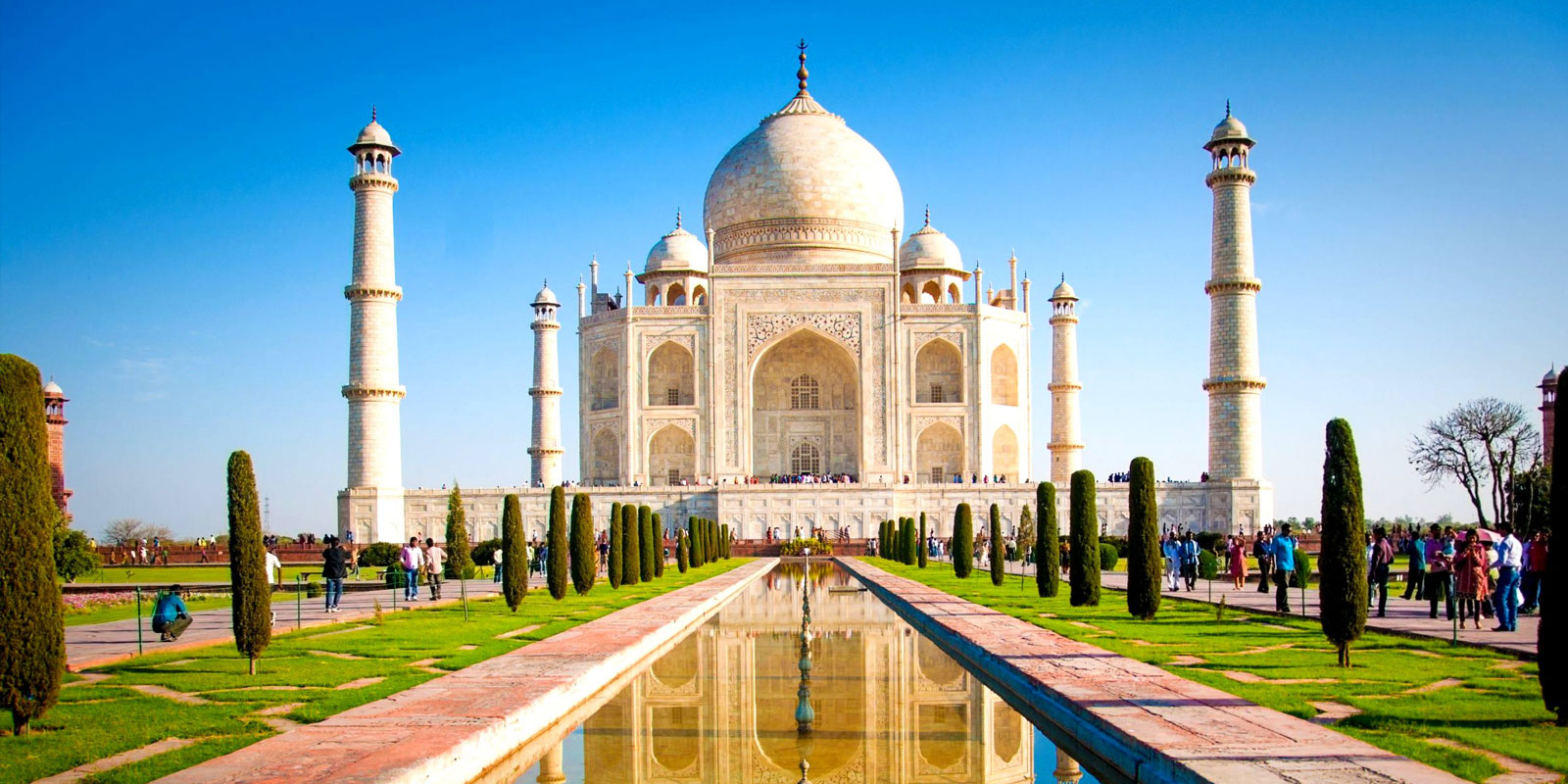
India
A fusion of modernity and tradition, a land of mysticism, warmth, sensuality, natural and scenic diversity, India is one of the most amazing nations on earth. The seventh largest nation in terms of area and the second most populous, India is a cradle of ancient civilization, a nation of forts, palaces, spicy cuisines, and the birthplace of Hinduism, Jainism and Sikhism. India offers exciting city experiences, spiritual energy and wilderness to its guests. One of the fastest growing economies in the world, India contains the modern mega-cities of Mumbai and Delhi, but is also home to the world’s oldest living city of Varanasi,as well as the beautiful valleys of Jammu and Kashmir, breathtaking hill stations including Darjeeling (nicknamed the Queen of Hills), an architectural statement of love in the Taj Mahal, as well as the simplicities of South India, the IT hub of Bangalore and much-loved Goa city.
History
Early civilizations thrived in India as early as 3300 BC. Advanced technology and infrastructure appeared sometime between 2600 and 1900 BC. and since then India has been the source of great achievements in mathematics (the invention of zero), medicine (Ayurveda) and architecture (Taj Mahal). Over the centuries, India interacted with the rest of the world through trade, conquest and migration. Greek, Roman and Persian cultures were all influenced by Indian culture. By 1600 India was ruled by the wealthy Mughal Dynasty. The British East India Company seized the right to trade in India in 1617 and went on to rule over this nation for around 250 years. The 1857 rebellion and War of Independence, also considered as the first movements against the British rule over India, led to the decline of Mughal Dynasty. The non-violent independence movement led by Mohandas Gandhi (respected as the Father of Nation in India) subsequently led to the independence of India in 1947, and it has since moved towards a modern and prosperous economy.
Geography and environment
India shares its border with Pakistan to the west, China and Nepal to the north, Bhutan to the north-east, Bangladesh and Myanmar to the east, Sri Lanka to the South, the Maldives to the South-west and Indonesia to the south-east in the Indian Ocean. It has wide stretches of coastline along the Arabian Sea, Bay of Bengal and Indian Ocean. The vastness of its geography gives India a variety of landscapes and terrain. From lush hills and forests in the eastern part of the nation to the deserts and plains of the west, from the Himalayas of the north to the fertile waterways of the south, India is blessed with an array of ecological and climatic diversities as well as flora and fauna variations.
Summer, rainy (or Monsoon) and winter are the major seasons in India. The monsoon season’s rain is brought by South-west and North-east winds, with the North-eastern region experiencing both kinds of winds which consequently gives it the highest rainfall in the world. November to January is the winter season in India, February and March bring spring. April and May are the hot months, and the monsoon generally lasts from late May to October.
Culture and Customs
Modern India is strongly influenced by the legacy of its ancient culture extending back to Vedic times. The birthplace of Hinduism, Jainism and Sikhism, India entices many visitors by the spirituality inculcated in many aspects of its society. There are also significant populations of Muslims and Christians.
The rich cultural heritage of India is held in literary writings in many languages, Classical and folk dances, art and theatre, classical and modern Bollywood music, festivals and chariot processions such as the Ganesh Chaturthi in the city of Mumbai. Family and social ties are much valued within Indian society.
Other Highlights not to be missed
From playing cards to prayer flags, from yoga to Ayurvedic medicine and from Bollywood films to classical music, India has had a profound impact on the world. Authentic Indian cuisine and street foods, dance and fashion are well worth experiencing. Take in the pink city of Jaipur and the surrounding forts, or view the arati ceremony (Hindu praying) in the ancient holy city of Varanasi, visit Karni Mata Temple in Udaipur or the dreaming hills of Darjeeling and Sikkim, Experience the unique Rajasthani culture or laze in gorgeous Goa by the sublime beauty of ocean. All of these are not to be missed on a visit to India.
Best Season to visit
As India is so vast, the time to visit will depend upon which part you wish to go to. September to March is the most preferred season because of its cooler temperature. Winter (December to January) may make a visit to Delhi or the northern regions of India uncomfortable, especially at night when temperature drops. Though the monsoon offers hot and humid conditions, it’s considered one of the best times to visit Ladakh and the hills.
With aromatic markets and modern boutiques, rural setting to urban bustle, rich scenic, cultural and architectural legacy and evidences, India is a lively and vibrant nation. Though its cuisine and people can now be found around the world, only a first hand visit can show you the true India.










